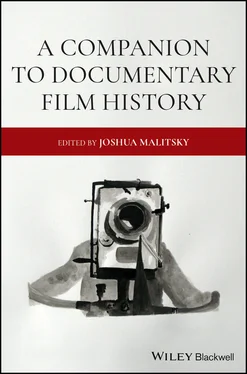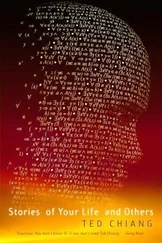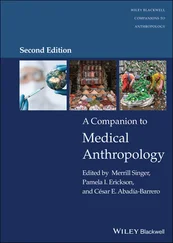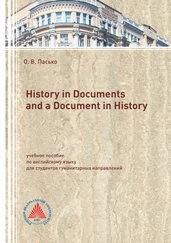The designation of authorship has a separating function, inscribing an imaginary line above or below which the creative responsibility of a film gets retroactively assigned by a movie's credits. A recent lawsuit in France over La Marche de l'empereur/March of the Penguins (Luc Jacquet, France, 2005), echoes the conflict between Doyen and Parnaland and testifies to the enduring status of authorship as a critical category through which documentaries get defined, conceptualized, regulated, and studied, not just in terms of textual properties and questions of style, but in terms of the ways they manifest contested categories of labor and cultural value. In approaching the production of March of the Penguins, director Luc Jacquet claimed he “wanted the film to have a fresh look that only a crew who had never been down there [Antarctica] before could give” (Most 2007). He thus chose to send the cinematographers down to work primarily in his absence. The cinematographers Laurent Chalet and Jérôme Maison spent over a year in Antarctica filming, suffering numerous hardships, including getting lost in a blizzard that required a month of medical convalescence and then enduring a very difficult transition back to everyday life after such long stretches of isolation. Jacquet, who was in France during almost the entire shoot, later appropriated the stories of their adventures as his own experiences during promotion for the film, inspiring David Fontaine to quip in the pages of Canard enchaîné : “Sometimes I is another, or more precisely, two others” (Fontaine 2006; Most 2007). Jacquet's project was originally intended to be a documentary for television, but it was reconceived as a feature film based upon the quality and drama of the footage (the original French version is more narrative in the style of a Disney’s True‐Life Adventures series, whereas the English dub, thanks to Morgan Freeman's narration, is more soberly documentary). Chalet thus made a case for co‐authorship since the director was neither present nor in direct communication with Chalet and Maison for much of the filming. Given the footage was shot in the wild, Chalet argued that he was more than a technician following orders, he was an artist making important creative choices in the field (Maison for his part, continued to collaborate with Jacquet, and did not participate in the suit) (Anon 2006a). Anne Boissard, lawyer for the production company Bonne Pioche, successfully appealed to precedent in making a case in favor of Jacquet, referring to the law of 1957 that restricted the role of cinematic author to the director, the screenwriter, and musical score composer (Vulser 2006; Nesbit 1987: 239). The implication, ironically, is that those most directly responsible for the capture and creation of the images in a documentary film are often denied any claim of authorship over these images.
A century of legal disputes from Doyen vs. Parnaland to Jacquet vs. Chalet have consistently favored a rather narrow definition of authorship and with it a rather narrow sense of what counts as documentary. But that such suits continue to be filed and fought suggests that even within a rather narrow sense of authorship corresponding to conceptions of expression as ultimately a question of individual private property, “author” is not a stable, self‐contained signifier. It is not the responsibility of scholars to respect the status quo or secured common sense understandings of such concepts, but rather to critically examine the historical specificity of consolidated patterns as well as their fissures. As Cynthia Chris and David Gerstner propose, authorship is best approached as a “ frictive ” phenomenon (Chris and Gerstner 2013: 11). If authorship may be understood as a category of creative labor and an agency (individual, collective, even transhuman) involved in the production of intentional expressions, everything else about authors and authorship requires scrupulous attention to context. In the revolution‐era Soviet Union – as Philip Rosen and Alla Gadassik discuss in their contributions to this book – practices of authorship critical of the singular bourgeois subject were being explored. Relatedly, in the People's Republic of China, we find conceptions of popular authorship distinct from Western capitalist and Soviet socialist models developed to privilege the collective – the people – as the ultimate agent and author of creative works (Pang 2013: 72–86). Questions of documentary authorship require an approach to the term as a condensation or nodal point for a network of creative acts, enactments of subjectivity and agency, forms of labor, and regulative practices that produce and circulate texts. The question of documentary authorship may require – with apologies to Bruno Latour – the development of an Author‐Network Theory or AuNT, to account for the interplay of forces involved in the creation of nonfiction and documentary films.
* * *
It is the collective endeavor of the contributors to this section to apply critical pressure to the concepts of the authors, authorship, and authoring agencies in documentary and nonfiction media, opening paths for a refreshed historiography of these fundamental concepts and their continued nonlinear development and contestation in our own present. Working across diverse geographical and historical contexts – such as the Revolution‐era Soviet Union, post–World War II Canada and Europe, and contemporary China – as well as with varied foci – from individual creative actors, to governmental agencies and corporations, to posthuman networked systems of ambient surveillance – the contributors offer both historical specificity and a generative conceptual flexibility for approaching nonfiction and documentary authorship.
Philip Rosen and Alla Gadassik consider how the aesthetic shifts instantiated by the Russian Revolution and its valorization of collective effort informed authorship as well as models of cinema historiography. Rosen's “Now and Then: On the Documentary Regime, Vertov, and History,” extends his substantial reflections on documentary, film history, and historiography in Change Mummified: Cinema, Historicity, Theory (2001). Viewing Vertov's Kino‐Nedelia (1918–1919), he asks “ was this the emergence of the Vertov we now know?” The recognizability of “Vertov” as a distinct authorial vision animates reflections on the proximity of documentary and experimental media practices for how they organize and possibly disorganize approaches to film history. Rosen sees Vertov's work as a model of historical temporalization, wherein it may be understood as configuring the relationship of now and then, transformation and stasis, as well as the historical object and historiographical subject (what Rosen refers to as the “historical subject in the future of the historical objects”). The Vertovian documentary, which assembles indexical signs into daring temporal configurations, concretizes a practice of radical historical thinking. Gadassik's “A Skillful Isis: Esfir Shub and the Documentarian as Caretaker” considers the innovative work of Shub as both a pioneer of the documentary compilation film but also as exemplary of the “authorial invisibility” of the many women working as editors and editorial assistants (montagesses) in the revolution‐era film industry. Gadassik examines the tensions between editing as a formal property and as one of the stages of film production. Through her attention to the gendered dynamics of the distribution of labor and credit, as well as to the material specificities of this work, she proposes a feminist theory of distributed and anonymous authorship. Expanding upon Sergei Eisenstein's likening of the editorial assistant to the Egyptian goddess Isis, who reassembled the body parts of her husband Osiris in order to reanimate him, Gadassik concludes that Shub's often anonymous labor “is precisely what allowed [her] to function, like Isis, as a gatherer and compiler of historical bodies and faces that would have otherwise remained on the battleground of the artistic revolution.” Gadassik does similar work for the montagesses and the many women who labored in and through anonymous authorship. Rosen and Gadassik pose variations of a question tidily formulated by Jonathan Gray (2013): When is an author? Their contributions allow us to examine the manners in which authorship shifts in minor and substantial ways throughout the film production process, but also how our perceptions of authorship (and who or what is an author) shift over time.
Читать дальше












